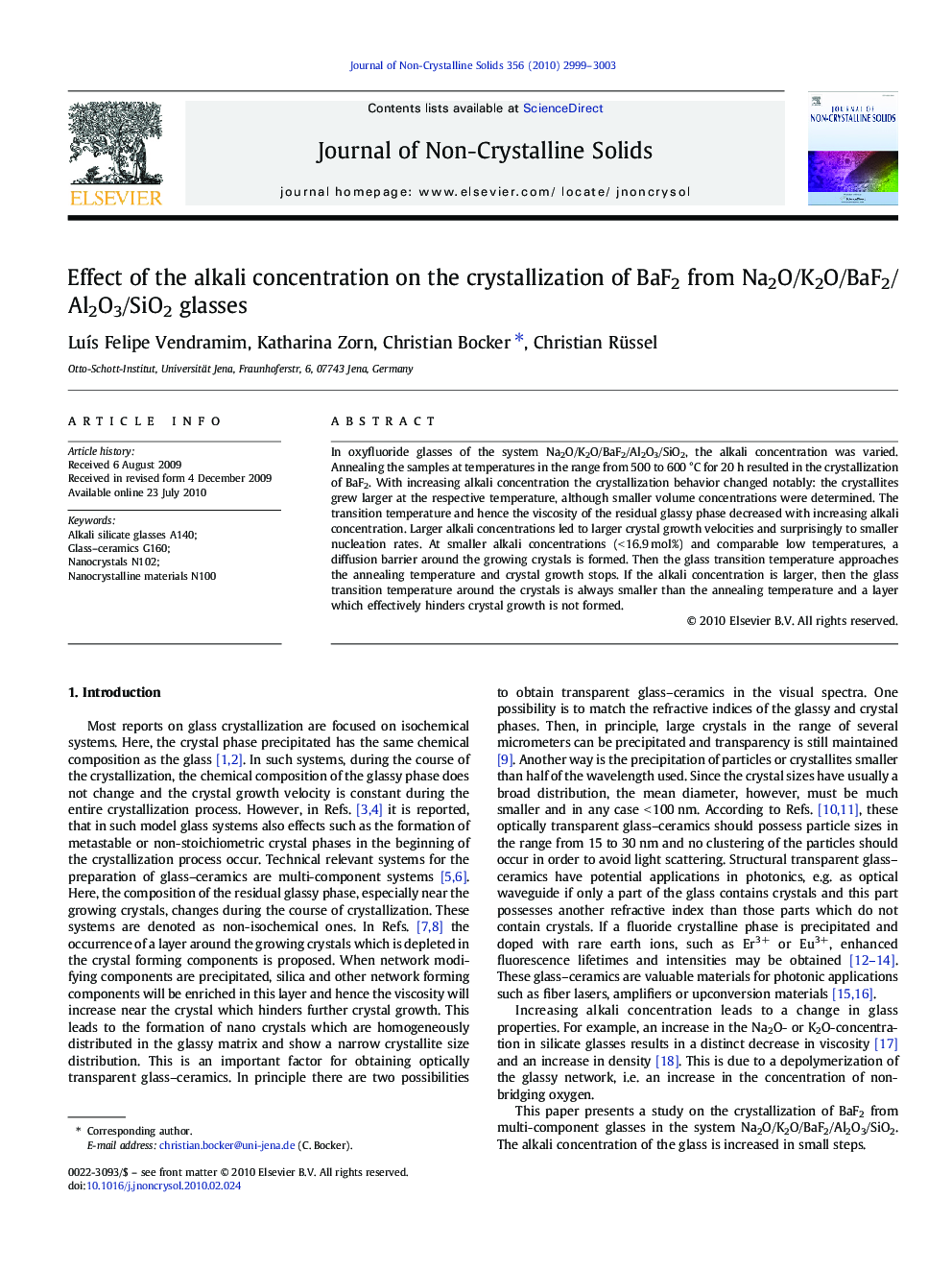| Article ID | Journal | Published Year | Pages | File Type |
|---|---|---|---|---|
| 1482623 | Journal of Non-Crystalline Solids | 2010 | 5 Pages |
In oxyfluoride glasses of the system Na2O/K2O/BaF2/Al2O3/SiO2, the alkali concentration was varied. Annealing the samples at temperatures in the range from 500 to 600 °C for 20 h resulted in the crystallization of BaF2. With increasing alkali concentration the crystallization behavior changed notably: the crystallites grew larger at the respective temperature, although smaller volume concentrations were determined. The transition temperature and hence the viscosity of the residual glassy phase decreased with increasing alkali concentration. Larger alkali concentrations led to larger crystal growth velocities and surprisingly to smaller nucleation rates. At smaller alkali concentrations (< 16.9 mol%) and comparable low temperatures, a diffusion barrier around the growing crystals is formed. Then the glass transition temperature approaches the annealing temperature and crystal growth stops. If the alkali concentration is larger, then the glass transition temperature around the crystals is always smaller than the annealing temperature and a layer which effectively hinders crystal growth is not formed.
